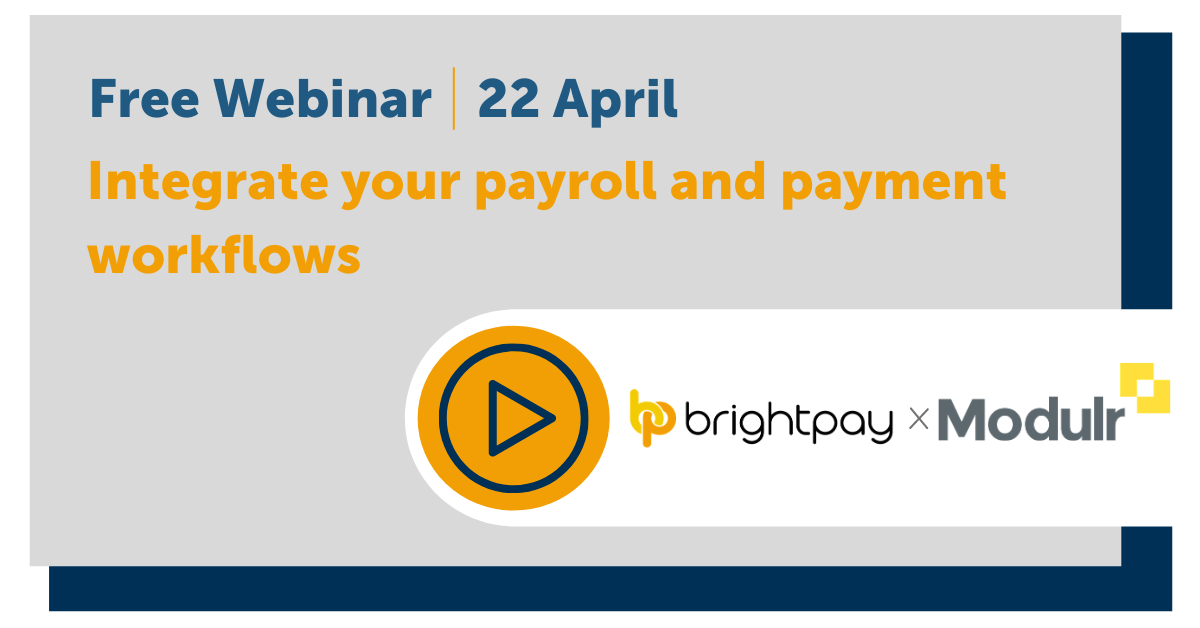Apr 2021
21
The true cost of payroll processing and 3 ways to reduce the hidden impact on payroll
With little automaton and integration, calculating payroll and settling payments can be a complicated end-to-end process. The complexity of traditional payment flows makes reconciliation difficult, and this is further compounded by an outdated banking infrastructure, with its reliance on manual process and file uploads.
As complexity increases, so too does cost. In the current economic climate, there may be a clear temptation to delay the technological upgrades required to streamline this process. But, as recent research has shown, by not shedding legacy technology and shoring up operational efficiency, companies are adopting an increasingly risky strategy – especially when it comes to the payment processes that sit at the very heart of a business – payroll.
Payment processes incur both hard and hidden inefficiencies
What is clear from the research is that payment processes incur both hard and hidden inefficiencies. The biggest hard cost, as reported by 39% of businesses surveyed, is the hours spent on manual processes.
Depending on the payroll software used, the current payroll process can be error-prone and time-consuming - a fragmented process relying on manual entry, including:
- Manual entry of payee details, tax codes and reference numbers
- Archaic file upload system
- Time taken to check, and often double check the figures, to fix the file errors and incorrect value inputs, to deal with payment rejections and to action the emergency pay procedures, should deadlines be missed, or payments be redirected.
The Bacs system has a 3-day cycle to payment completion so even once files are uploaded and payments are processed, there is still a wait for those payments to clear.
The hidden costs pack a bigger punch
But, it’s the hidden costs that can pack a bigger punch, with 65% of employment services companies agreeing that these actually outweigh the hard costs.
Take, for example, the manual process of payroll - the hard cost is the salary paid against the quantifiable hours spent on the process, while the hidden cost is where those hours could have been better spent and the impact that it could have had on customer experience and satisfaction, competitor differentiation, brand reputation, business agility and team morale.
3 ways to reduce the hidden impact on payroll
1. Be responsive to the needs of the Instant Economy
The Instant Economy – an economy of instant experiences, instant information and instant services in both consumer and business lives. But digital, real-time, and responsive business services are required to power the Instant Economy, and a fast digital payments solution must be at the heart of the services infrastructure.
The Instant Economy is increasingly becoming the benchmark for customer experience. When applying Instant Economy thinking to payments, it is not about making them happen quickly. That is just the start. It’s about building innovative products on top of a real-time and responsive, digital payments infrastructure.
Accountants and payroll bureaus need to innovate and evolve to meet the expectations of a market that is accustomed to the benefits of faster, more instant payments. And luckily this is now easier than they think, thanks to companies like BrightPay.
2. Use payment integrated payroll
Leveraging Modulr’s direct access to the critical payments infrastructure, BrightPay can now offer its customers an alternative to the legacy system and a more agile and reliable method of running payroll. This new functionality will integrate payroll and payment processes and remove the reliance on file upload to provide a better end-to-end solution for both accountants and payroll bureaus, and their clients.
The Modulr platform allows BrightPay to remove many of the manual processes currently used for payments processing and replace them with automation. This in turn reduces both the financial impact of the hours spent on payroll and the number of manual errors made when processing payments, which becomes particularly critical for payroll bureaus dealing with multiple clients.
3. Automate to Innovate
Using end-to-end automation in this way is key to driving efficiency and reducing costs, both hard and hidden - replacing the legacy payroll system with a real-time and responsive, digital one, and reducing a two-hour process down to 30 seconds.
Payments can be triggered automatically, from one platform, incurring no more manual processing or checking that funds have cleared. There’s no need to extract files to upload to banking systems or wait for Bacs payments to clear and errors to surface; last minute changes can be processed at the last minute. Payments can be paid in seconds, even outside of banking hours and with full visibility for faster and easier reconciliation.
Delay, and there’ll be a price to pay
So, accountants and payroll companies tempted to put off the technological upgrades required to streamline what is traditionally a complicated, error-prone and time-consuming payroll process should take heed – delay and there’s a high price to pay. And, not just in terms of the hard cost of the process itself, but also the hidden costs which are now shown to be more far-reaching.
But there are alternatives. Digital technologies are revolutionising many of the traditional ways of doing things, including payroll, resulting in better end-to-end journeys. Automation and systems integration are the key to realising digital transformation ambitions, while reducing costs, both hard and hidden. And by harnessing Modulr technology, BrightPay can now offer its customers both.
BrightPay and Modulr are together transforming the way accountants and payroll bureaus do business, by streamlining and automating their payments and payroll processes. Book a demo of BrightPay today or watch this short video to see the BrightPay & Modulr integration in action. On 22 April, join the BrightPay and Modulr teams for a free webinar, as we explore what you need to know about this Direct Payments functionality. Plus, we will demonstrate how quick and seamless the process is in both BrightPay and Modulr.










